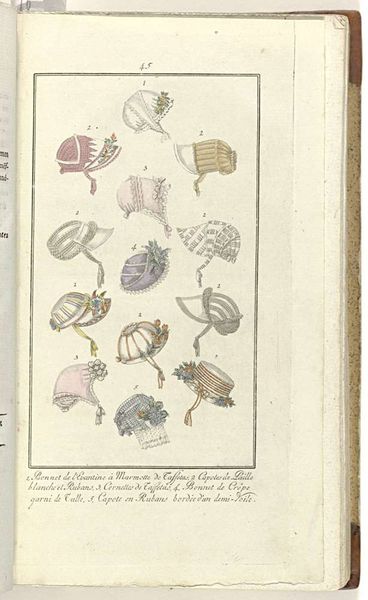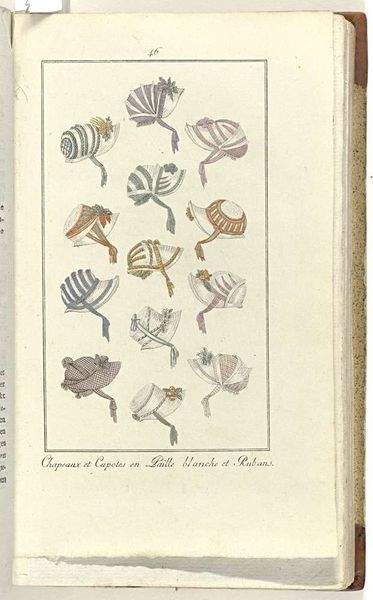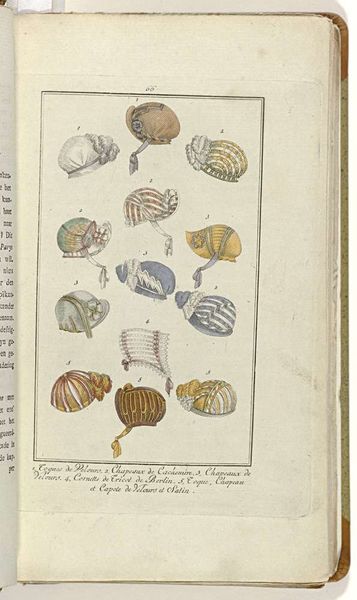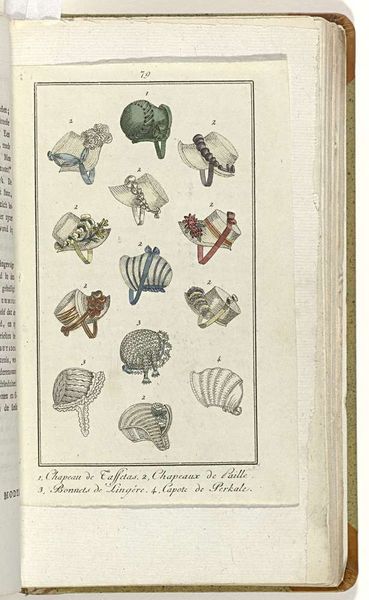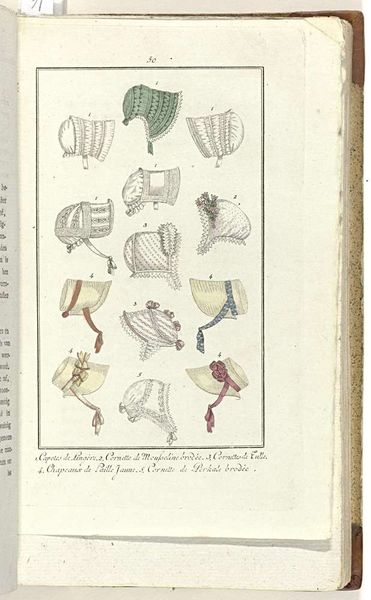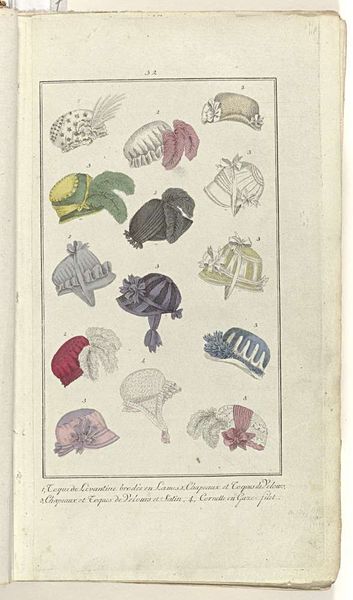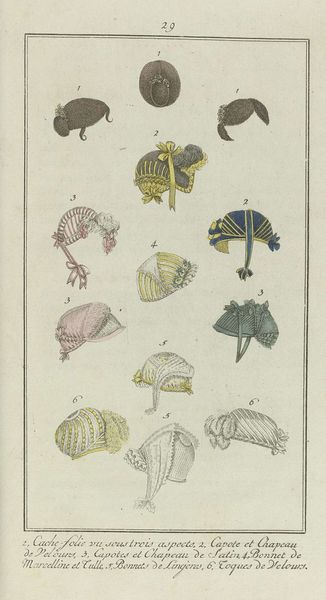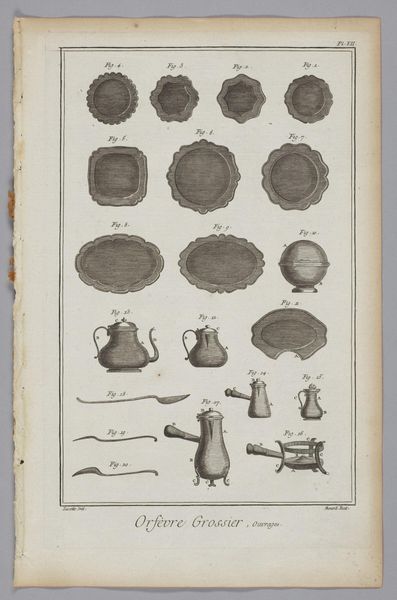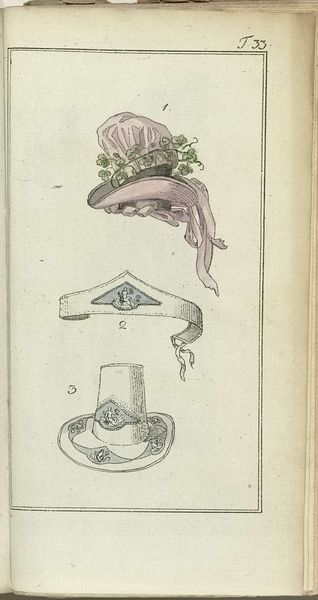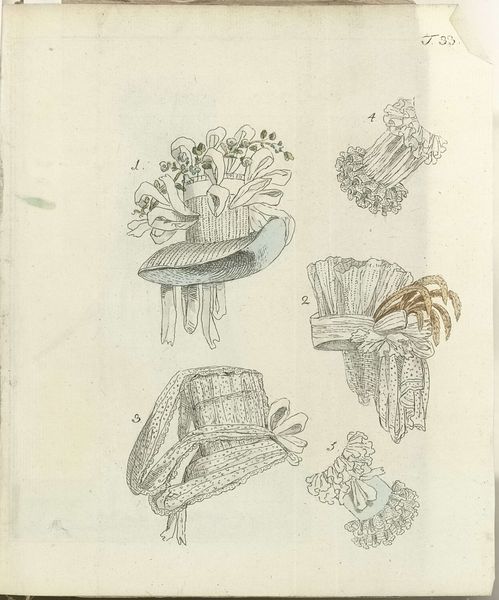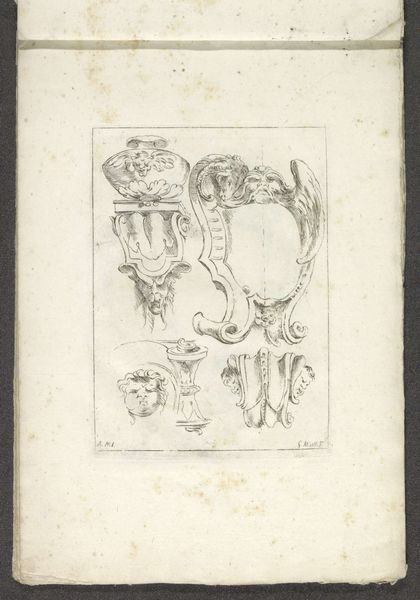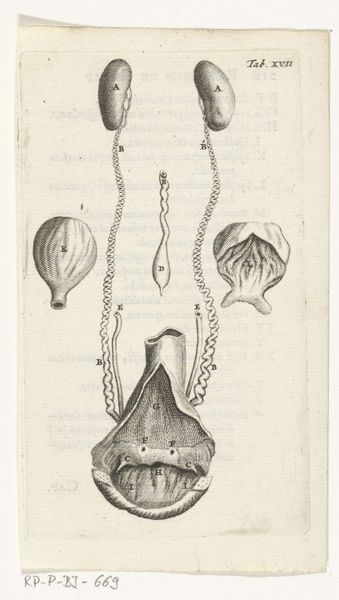
Elegantia, of tijdschrift van mode, luxe en smaak voor dames, Oktober 1808, No. 60: 1. Capotes de Taffetas... 1808
0:00
0:00
print, watercolor
#
neoclacissism
# print
#
watercolor
#
watercolour illustration
#
genre-painting
#
decorative-art
#
watercolor
Dimensions: height 218 mm, width 120 mm
Copyright: Rijks Museum: Open Domain
Curator: What a delightful catalog of early 19th-century fashion! This watercolor print, created by an anonymous artist in October 1808, comes from the journal *Elegantia, or journal of fashion, luxury and taste for ladies*. The image showcases an array of women’s bonnets and hats. Editor: My initial feeling is one of lightness and almost…silliness. The hats are so delicate and fussy! But also, undeniably, there's a strong sense of constructed identity on display here. Curator: Absolutely. The meticulous detail given to each bonnet, each ribbon and fold, reveals the importance of fashion in constructing and communicating social identity. You can see Neoclassical influences in the simplicity of some of the forms. These weren't just accessories; they were statements. Editor: And those statements would have resonated strongly with the socio-political currents of the time. The Napoleonic era saw shifts in power, the rise of a new bourgeoisie… Fashion was never isolated. To consider those bonnets—those status symbols—worn by women navigating a transforming Europe is truly revealing. Curator: Yes, the ribbons, the taffetas, and satin themselves have symbolic value too. Each fabric, each colour, would carry particular associations for its contemporary audience. Think about what certain textures might have connoted—wealth, status, perhaps even allegiance. What do you make of the repetition of the forms here? Editor: It strikes me as a clever way to subtly communicate variation within the bounds of accepted social norms. While all are recognizably bonnets, there is enough differentiation to cater for a breadth of tastes within a select echelon of society. One begins to ask, which bonnet proclaims a sense of loyalty, and which rebels? Curator: Indeed. And to appreciate how such visual communications functioned over two centuries ago enriches our present understanding too, reflecting on the ways visual signs carry powerful signals across time. Editor: It reminds us how material culture preserves a living, breathing history in these meticulously rendered fashions of the past.
Comments
No comments
Be the first to comment and join the conversation on the ultimate creative platform.
